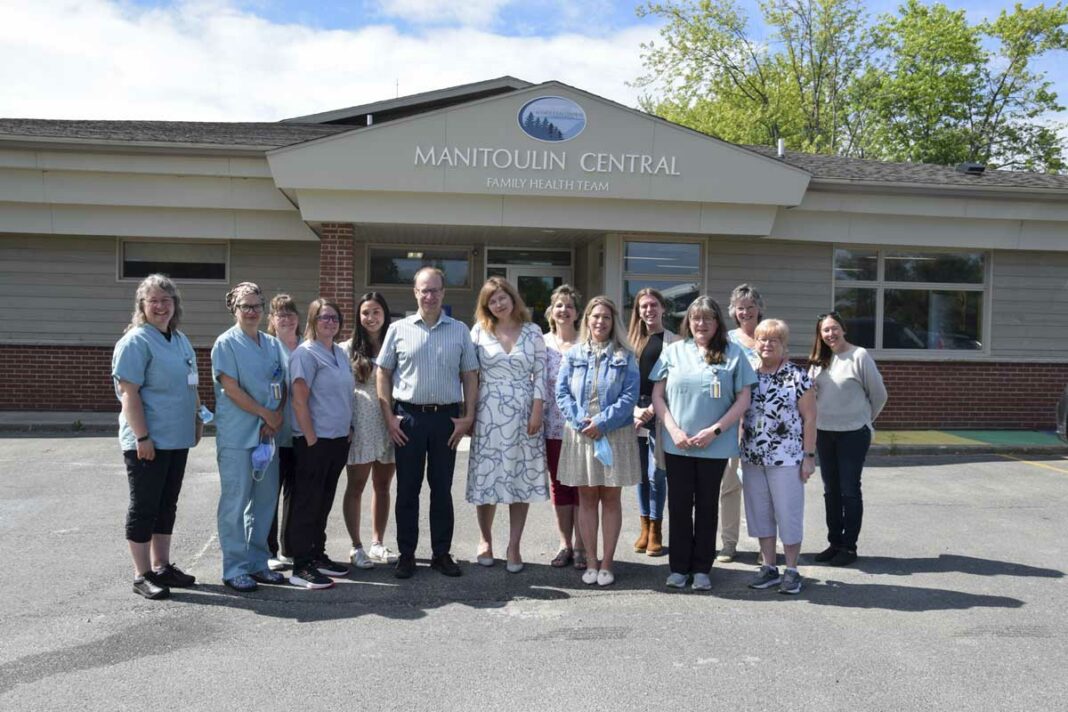MINDEMOYA—Technology has brought huge improvements to the delivery of health services in communities across the North, especially in smaller rural communities such as those on Manitoulin Island through the use of telehealth. But that delivery depends heavily on having the technological equipment and infrastructure to connect specialist with patient.
“The Manitoulin Central Family Health Team (MCFHT) was the recipient of the very generous donation of $35,000 from the Douglas A. Smith Family Foundation to support the Ontario Telemedicine Network (OTN) program offered in Mindemoya,” said health team executive director Lori Oswald. “The OTN program enables accessible healthcare by using video and secure technology to connect patients and health care providers. The MCFHT was able to replace end-of-life equipment in a timely manner with this funding support.”
End-of-life indeed. Ms. Oswald shared that within less than a week of confirmation of the Douglas A. Smith Family Foundation donation the old equipment gave up the ghost. “We were able to replace the equipment and were back up within a couple of days,” she said.
Ms. Oswald shared that the OTN program at MCFHT is comprised of three different opportunities, all offered at no cost to the patient.
“The virtual specialist appointment supports patients locally with video conferencing options within the MCFHT facility to connect with healthcare providers and decreasing travel time to receive specialist care; the teleophthalmology program supports diabetic patients by offering retinal screening; and the Telederm Program supports patients who have skin conditions that require specialist care by taking pictures of their skin and uploading it to a consulting dermatologist,” she said.
Douglas A. Smith Family Foundation representative Jeff Smith was provided with a demonstration of how the equipment is utilized. Dr. Maurianne Reade settled into an office as the “specialist” while “patient” Collin Corbiere was examined remotely through the assistance of a nurse.
Handheld equipment allowed for the close examination of a scratch on Collin Corbiere’s arm (apparently the result of a close encounter with an over-exuberant dog). The scratch did not require medical attention but served as a handy focal point for the demonstration.
Ms. Oswald explained that the equipment also does service in palliative care, allowing for distant family members to connect with their loved one in the health centre.
“For small communities like ours, there are no specialists nearby,” noted Ms. Oswald. “This enables patients to see a specialist while staying close to home and in a more familiar setting.”
The cost savings for the patients can be considerable, given that some specialists are located in larger centres in Southern Ontario such as Toronto.
Even psychiatric examinations are often possible through the use of the technology, allowing the doctor to see the physical reactions to questions and how the patient answers those queries. Ms. Oswald noted that, while a patient may answer they “are fine,” the way that patients hold themselves in providing that answer can tell a much different story.
Mr. Smith shared some stories on the challenges experienced in attending appointments in Southern Ontario and noted that the foundation was very pleased to be able to support such a worthy and important program.
Following the demonstration, members of the family health team and Mr. Smith enjoyed some light refreshments before heading back to their busy occupations.





